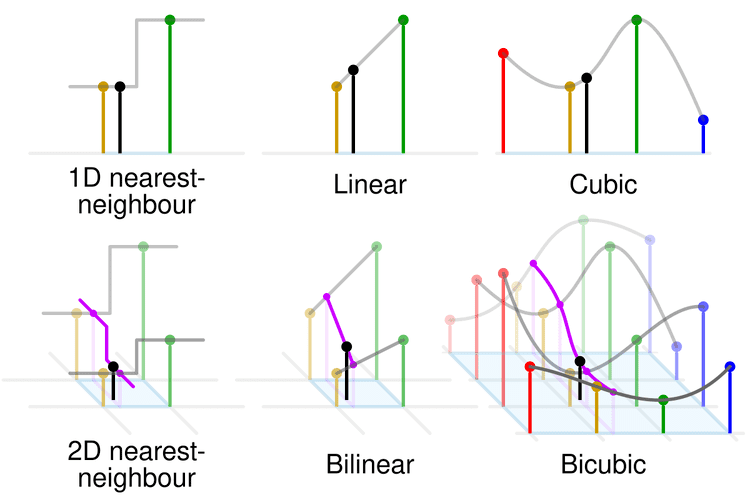 | ||
In numerical analysis, multivariate interpolation or spatial interpolation is interpolation on functions of more than one variable.
Contents
- Regular grid
- Any dimension
- 2 dimensions
- 3 dimensions
- Tensor product splines for N dimensions
- Irregular grid scattered data
- References
The function to be interpolated is known at given points
Multivariate interpolation is particularly important in geostatistics, where it is used to create a digital elevation model from a set of points on the Earth's surface (for example, spot heights in a topographic survey or depths in a hydrographic survey).
Regular grid
For function values known on a regular grid (having predetermined, not necessarily uniform, spacing), the following methods are available.
Any dimension
2 dimensions
Bitmap resampling is the application of 2D multivariate interpolation in image processing.
Three of the methods applied on the same dataset, from 16 values located at the black dots. The colours represent the interpolated values.
See also Padua points, for polynomial interpolation in two variables.
3 dimensions
See also bitmap resampling.
Tensor product splines for N dimensions
Catmull-Rom splines can be easily generalized to any number of dimensions. The cubic Hermite spline article will remind you that
This formula can be directly generalized to N dimensions:
Note that similar generalizations can be made for other types of spline interpolations, including Hermite splines. In regards to efficiency, the general formula can in fact be computed as a composition of successive
Irregular grid (scattered data)
Schemes defined for scattered data on an irregular grid should all work on a regular grid, typically reducing to another known method.
